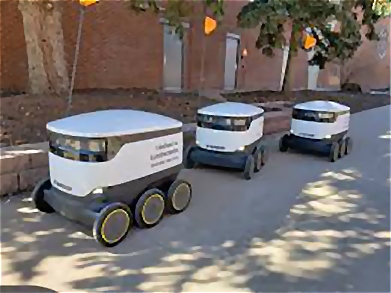During the pandemic, technologies are playing an important role in keeping our society functional in a time of quarantine and lockdowns. And these technologies have a long-term impact beyond COVID-19. Here are some of the latest technology trends to watch in the pandemic:
Digital and contactless payments
Cash might carry the dangerous virus, so central banks in the US, China, and South Korea have implemented different measures to make sure bank notes are clean they go into consideration. Now, contactless digital payments, either in the type of e-wallets or cards, are the advised payment technique to avoid the spread of COVID-19. Digital payments permit people to make internet purchases and payments of services, goods, and even utility payments, as well as to get stimulus funds quicker.
Telehealth During Pandemic
Telehealth can be a successful way to contain the spread of COVID-19 while still offering essential primary care. Wearable personal IoT gadgets can track important signs. Chatbots can make primary diagnoses based on symptoms identified by patients.
Anyway, in countries where medical costs are very high, it is vital to make sure telehealth will be covered by insurance. Telehealth also needs a certain level of tech literacy to operate, as well as the best internet link. And as medical services are one of the most heavily regulated businesses, doctors generally offer medical care to patients who live in the same jurisdiction.
Supply Chain 4.0
The virus has created disruptions to the international supply chain. With quarantine and distancing orders, some factors are fully shut down. While demand for personal protective equipment and food rises, some countries have implemented different levels of export bans on those items. A lack of visibly on data, heavy resilience on paper-based records, lack of diversity, and flexibility have made the existing supply chain system weak to any pandemic.
Core technologies of the Fourth Industrial Renovation, such as cloud computing, Big Data, the Internet of Things, and blockchain are building a more resilient supply chain management system for the future by improving the accuracy of data and attracting data sharing.
Drones and robotics
COVID-19 makes the world realize how largely we believe in human interactions to make things work. Labor-intensive businesses, such as food, retail, logistics, and manufacturing are the bad hit.
Pandemic provided a powerful push to roll out the usage of research and robots on robotics. In recent weeks, robots have been used to disinfect places and to deliver food to those in quarantine. Drones have walked dogs and delivered items.
While there are some reports that lots of manufacturing jobs will be changed by robots soon, at the same time. Policies must be in place to provide the right training and social welfare to the labor force to embrace the change.
Online shopping and robotic deliveries
Online shopping needs to be helped with a robust logistics system. In-person delivery is not an illness proof. Many delivery firms and restaurants in America and China are launching contactless delivery services where goods are picked up and dropped at a designated place instead of manually. Chinese e-commerce monster also working on the development of robot deliveries, anyway, before robot delivery services become prevalent, delivery firms need to establish clear protocols to protect the sanitary situation of delivered goods.
3D printing
3D printing provides flexibility in production: the same printer can make different products based on different design materials and files, and simple parts can be made onsite immediately without requiring a lengthy procurement process and a long wait for the shipment to arrive.
Anyway, big production using 3D printing faces a few issues. First, there may be intellectual property problems involved in producing parts that are protected by patent. Second, making certain goods such as surgical masks is subject to regulatory approvals, which can take a long time to get. Other unsolved problems contain how design files should be protected under serene regimes, the place of origin and impact on trade volumes, and product liability linked with 3D printing products.



